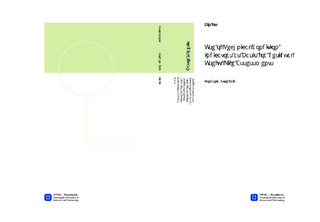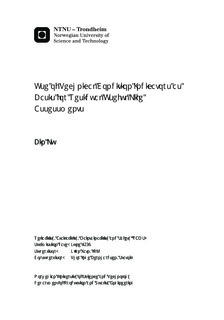| dc.description.abstract | This thesis is of service to realize residual useful life assessment. Everything in the world deteriorates over time. To know the residual useful life of a piece of equipment contributes to optimal decision-making on its usage time and discards. The rewarding also lies in reduced maintenance cost. For the application of industry process, a novel approach is proposed to define the term residual useful life, making efforts to satisfy diverse criterion on evaluation of equipment usefulness. In current research findings the definition of residual useful life varies. For maintenance purposes, residual useful life is explained by using diagnostics and prognostics, which are critical elements in condition based maintenance. In the domain of reliability, residual useful life is interpreted with probability theory, where mean residual life and conditional survival probability are frequently utilized.Rotating equipment is concentrated in which state-of-the-art models and methods for residual useful life assessment are investigated in this thesis. Residual useful life assessment techniques are dependent on deterministic, probabilistic and combined models in representing deterioration behaviors on various types of equipment. Apart from statistical theory, vibration signals, lubrication oil condition and acoustic noise signals are principal elements for the assessment. A stereotyped residual useful life assessment procedure consists of two interdependent stages, off-line deterioration model learning and on-line prognostic model training. In the best of circumstances, the sufficient raw data for the assessment are acquired through run-to-failure tests. The targeted systems for case study are AC generators and gas turbines served for oil and gas production in Kristin field. Statistical techniques are employed to process and analyze notification data of generators. The regression analysis shows an unimportant relationship between notification date and failure impact. Statistical trend tests do not verify the existence of any monotonic rate of occurrence of failures on AC generators. Vibration data analysis of the gas turbine does not provide monotonic information where residual useful life assessment models could be applied for. The notifications are not demonstrating a systematic pattern. Failures of AC generators and gas turbines are tend to be random. Challenges and recommendations are pointed out for Statoil to execute residual useful life assessment based on current situations. Lubrication oil condition monitoring is strongly recommended in this aspect.Procedures to realize maintenance optimization are demonstrated as a theoretical case study. Markov state model with inspection and block replacement policy are employed to construct cost models on maintenance optimization. With assumed cost elements, an optimal maintenance program is proposed. The analytic process is practically valuable to verify whether the regular inspection is the optimum maintenance strategy. | nb_NO |

